The Prorace CF 9.9 is Lapierre’s top-end carbon race hardtail, and while the French brand might not be the first you think of when considering XC bikes, it has plenty of racing heritage.
The bike features a host of SRAM components, from the drivetrain to the suspension, all bolted to a sleek-looking, eye-catching carbon frame.
There’s a race-focused RockShox SID SL fork and high-tech wizardry, with AXS gears.
The frame’s triple-triangle design is there to aid compliance, and shock absorption on cross-country bikes is key to adding speed – so how fast does the Prorace feel?
Lapierre Prorace CF 9.9 frame
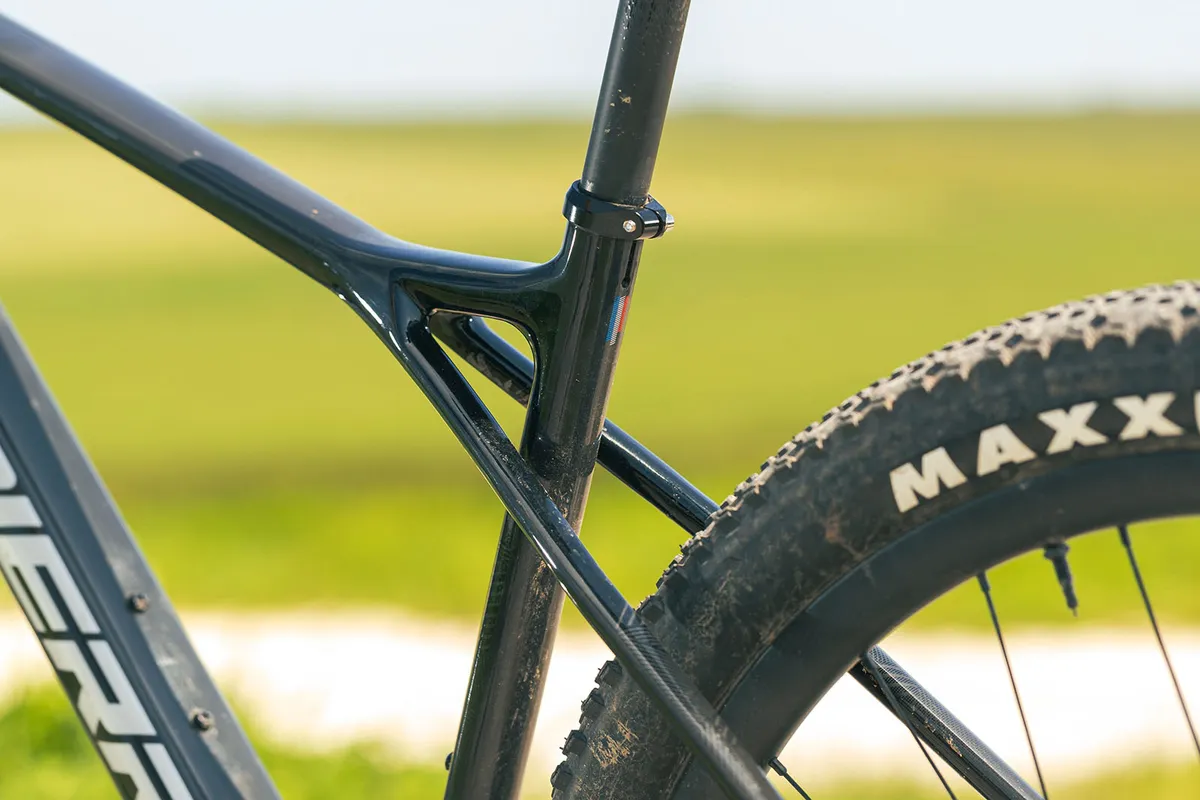
Lapierre’s Prorace CF 9.9 might have a silhouette that harks back to GT’s famous triple-triangle frame design, but Lapierre has been using it since 2015 on its road bikes. There's a method in the extended seatstays that makes sense on a race-bred hardtail mountain bike.
The carbon frame is designed to be comfortable yet stiff. With the junction of the seatstays, top tube and seat tube uncoupled, the idea is that vibrations are better dissipated into the top tube, with the seat tube being more isolated from the rear wheel. Lapierre calls this its 3D Tubular design and it’s one seen on the brand's road bikes too.
The frame is fairly typical of the rest of the XC market, with internal cable routing, chainstay protection and a SRAM Universal Derailleur Hanger at the rear. As with many carbon hardtails, there’s a press-fit bottom bracket. These can be lighter yet stiffer, but generally they’re harder to work on at home because it takes specialist tools to remove them.
Inside the front triangle, there’s a pair of bottle cage bosses.
Lapierre Prorace CF 9.9 geometry
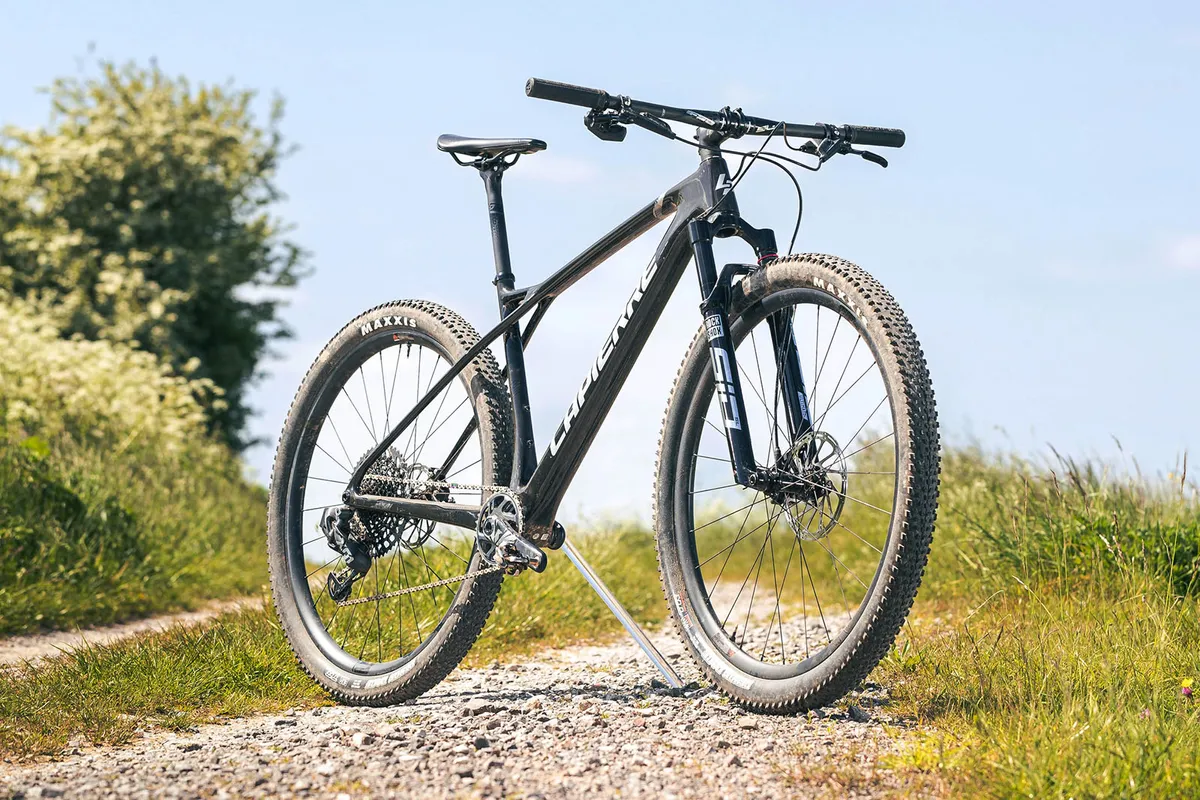
Lapierre hasn't gone wild with the Prorace’s geometry, with many figures sitting at or around average for this style of bike.
The head angle is (according to my anglometer) 67.6 degrees, close enough to Lapierre's claimed 68 degrees, while at 750mm the effective seat angle has been measured at 73.7 degrees. Because this is a hardtail, the seat angle will steepen a touch when the fork sags, as the bike pivots around the rear axle.
The reach on a size-large bike is 455mm – not long, but still longer than some of the bike’s competitors, such as the Cannondale Scalpel HT.
The bottom bracket sits 62mm below the axles, which is relatively low, while the chainstays are short at 420mm.
| | S | M | L | XL |
|---|---|---|---|---|
| Seat angle (degrees) | 74 | 74 | 74 | 74 |
| Head angle (degrees) | 68 | 68 | 68 | 68 |
| Chainstay (mm) | 420 | 420 | 420 | 420 |
| Seat tube (mm) | 390 | 430 | 470 | 510 |
| Top tube (mm) | 581 | 606 | 629 | 657 |
| Head tube (mm) | 85 | 90 | 100 | 110 |
| Fork offset (mm) | 44 | 44 | 44 | 44 |
| Bottom bracket drop (mm) | 67 | 62 | 62 | 62 |
| Wheelbase (mm) | 1,086 | 1,114 | 1,138 | 1,167 |
| Stack (mm) | 598 | 597 | 606 | 616 |
| Reach (mm) | 410 | 435 | 455 | 480 |
Lapierre Prorace CF 9.9 specifications
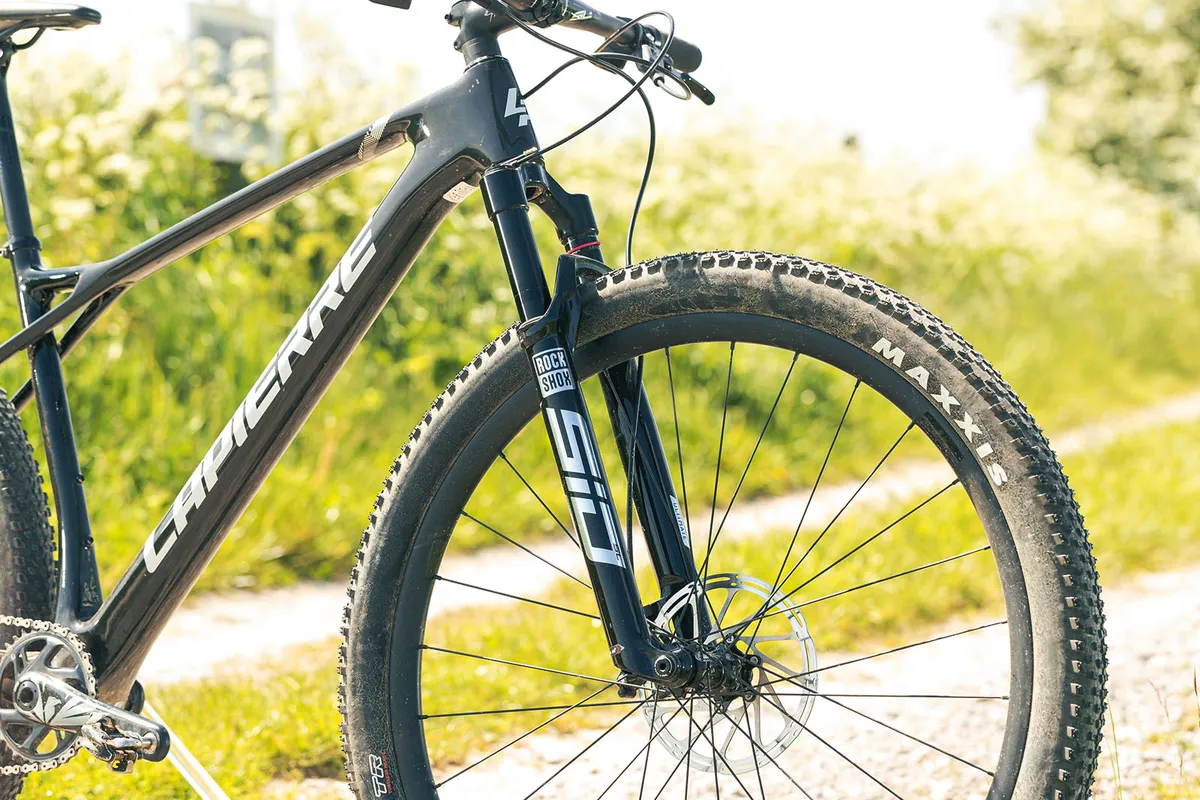
SRAM features heavily on this build.
There’s a 100mm-travel RockShox SID SL fork up front. It’s the Ultimate version, with the Charger Race Day damper and remote lockout.
There’s also a wireless AXS drivetrain fitted. It has an X01 derailleur and a GX shifter, while there’s a carbon X1 crankset with 34t ring. Removing wheels to fix a puncture is faster with SRAM’s derailleur cage lock than Shimano’s – seconds count on the race course.
Finally, from SRAM, there’s a set of Level TLM brakes.
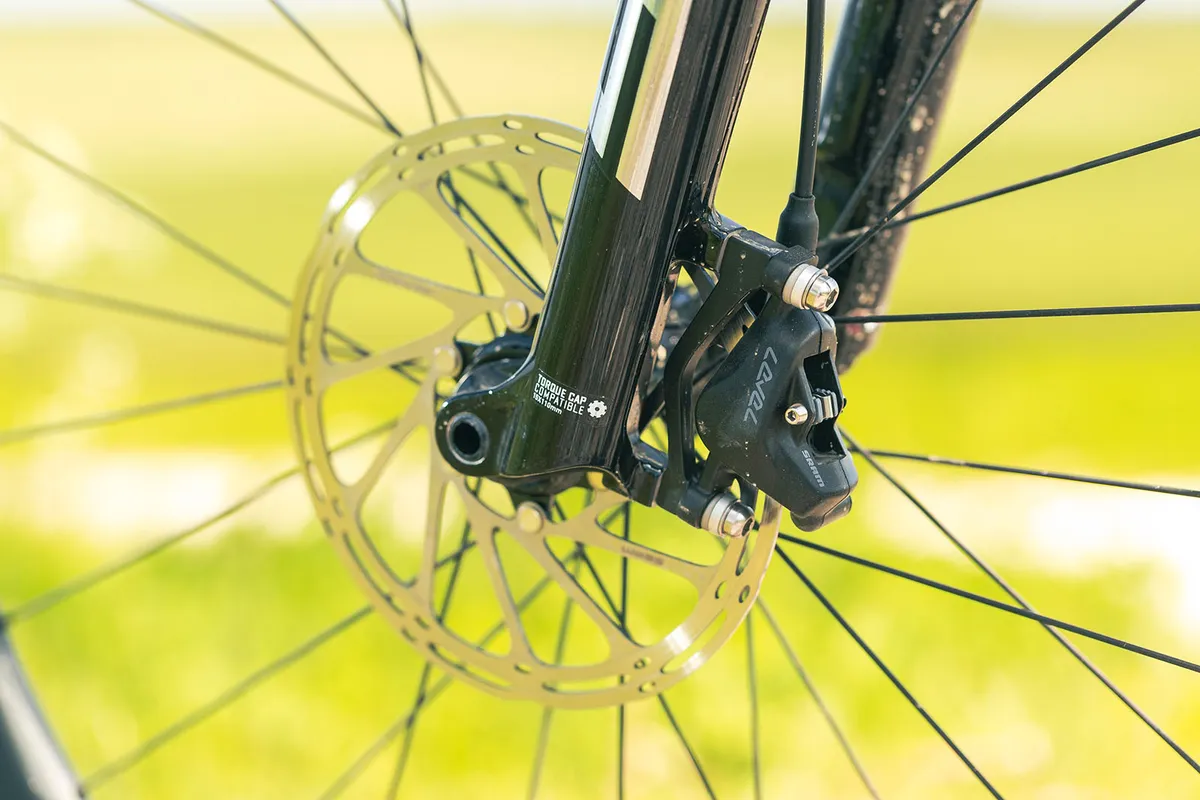
The wheels come from Lapierre, and include the brand's own 27mm internal-width carbon rims, onto which 2.35in Maxxis Rekon Race tyres are mounted.
The icing on the cake would have been Torque Caps on the hubs to make fitting quicker, but alas, the hubs are specced with standard end caps.
Lapierre’s own-branded kit finishes off the whole package.
Lapierre Prorace CF 9.9 ride impressions
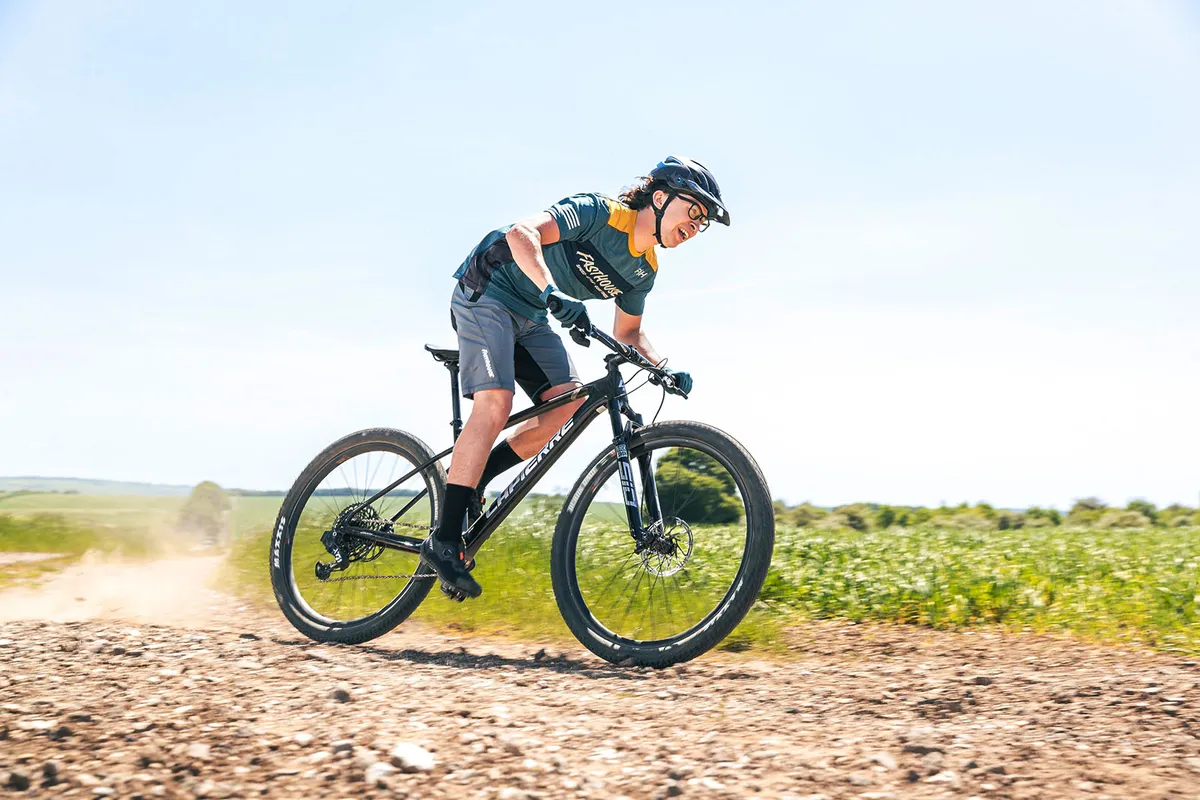
My test rides have been as wide-ranging as I can make them.
I’ve sprinted across town to the local trails, embarked on epic singletrack missions in the hills, rallied round woodland laps I’ve raced during Welsh XC series races, and scared myself silly on red-graded trail centre laps. My aim was to see whether the Lapierre could handle the heat when my heart rate was pounding through the roof.
Lapierre Prorace CF 9.9 climbing performance
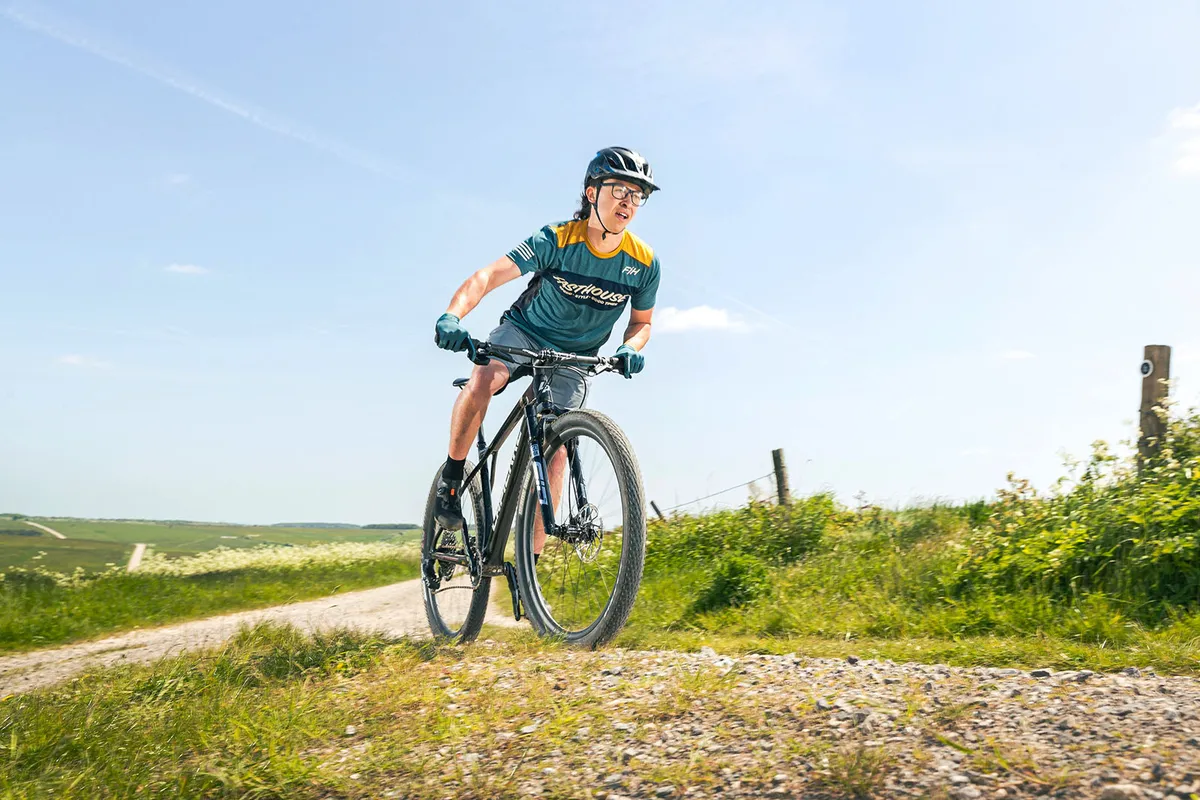
While frame compliance makes the most difference on descents, it’s fair to say that with the rear wheel a little more free and easy than it might otherwise be, traction uphill is improved.
Clatter the Prorace into a step or rock-riddled climb, and the frame’s give works with the supple tyres to soften the edges and reduce the amount the bike skips and slips around.
The Prorace probably isn’t quite as laterally stiff as Pivot’s LES SL or Cannondale’s Scalpel HT, with a little more swing side to side as you hammer the pedals, but this doesn’t particularly hold the bike back when you’re balancing your power output with rear-wheel traction.
The Rekon Race tyres are among my favourites. They have a low-profile, densely packed tread that rolls fast on smooth surfaces, but have enough suppleness in the carcass to generate ample grip on rougher, looser surfaces.
While a 2.4in Wide Trail version of the tyre exists, the 2.35in rubber fitted to this bike works well with the 27mm internal-width rims to give decent tyre volume. This, again, helps boost grip in loose conditions.
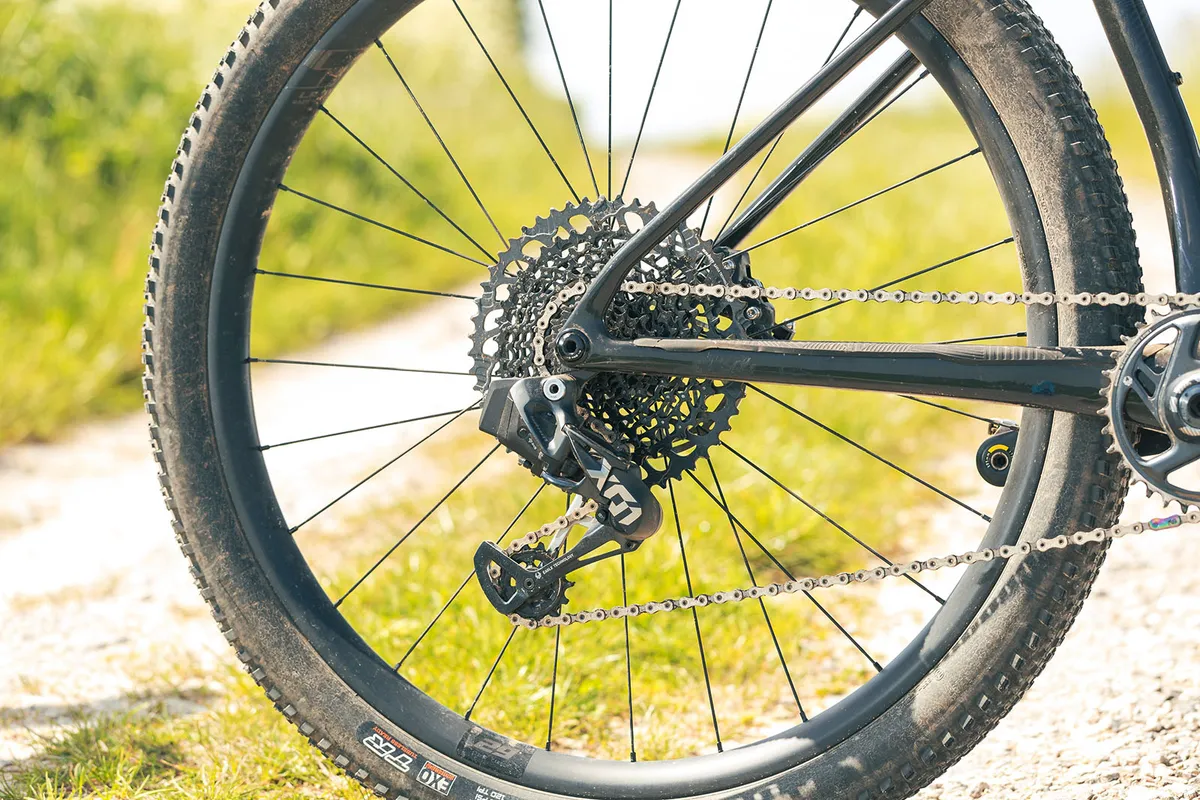
While Shimano’s mechanical drivetrains shift well under power, the SRAM AXS kit simply removes the stress of shifting. With a click of a shift paddle, your gears change without complaint – usually. The feel is consistent and the shift accurate, which is ideal through a winter race season, especially if you’re phobic of maintenance.
The SID SL fork is a decent unit. The lockout gives a little bounce before hitting a firm platform, so on-road bob is reduced, and on-trail traction is maintained. Left open, the fork bobs more than Fox’s 32 StepCast in my experience.
Sat pedalling, the bike is comfortable, with the frame, tyre and flex via the seatpost acting to keep you pounding out the watts.
Lapierre Prorace CF 9.9 descending performance
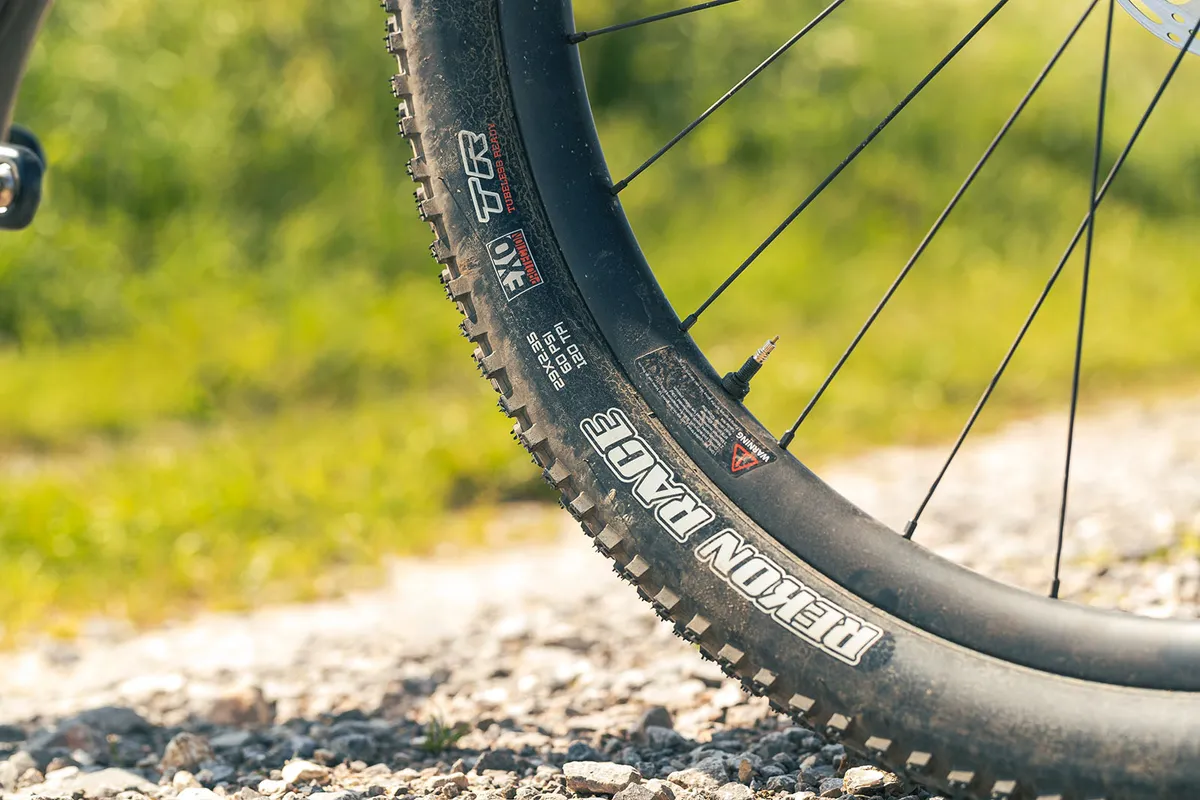
Once again, the tyres’ volume and comfort are enhanced by the frame’s vertical compliance on descents. While it’ll never compete with a full-suspension bike in terms of speed on rough descents, the smoothing out of the trail helps the Prorace maintain pace over moderately technical terrain surprisingly well.
It gives the bike a less jarring ride, which helps calm the way so you can focus on the task ahead of you.
In comparison to other bikes, I’d say the Lapierre frame has more compliance than most, thanks to the 3D Tubular concept. This all adds to your flow as you skim over small-to-medium sized hits.
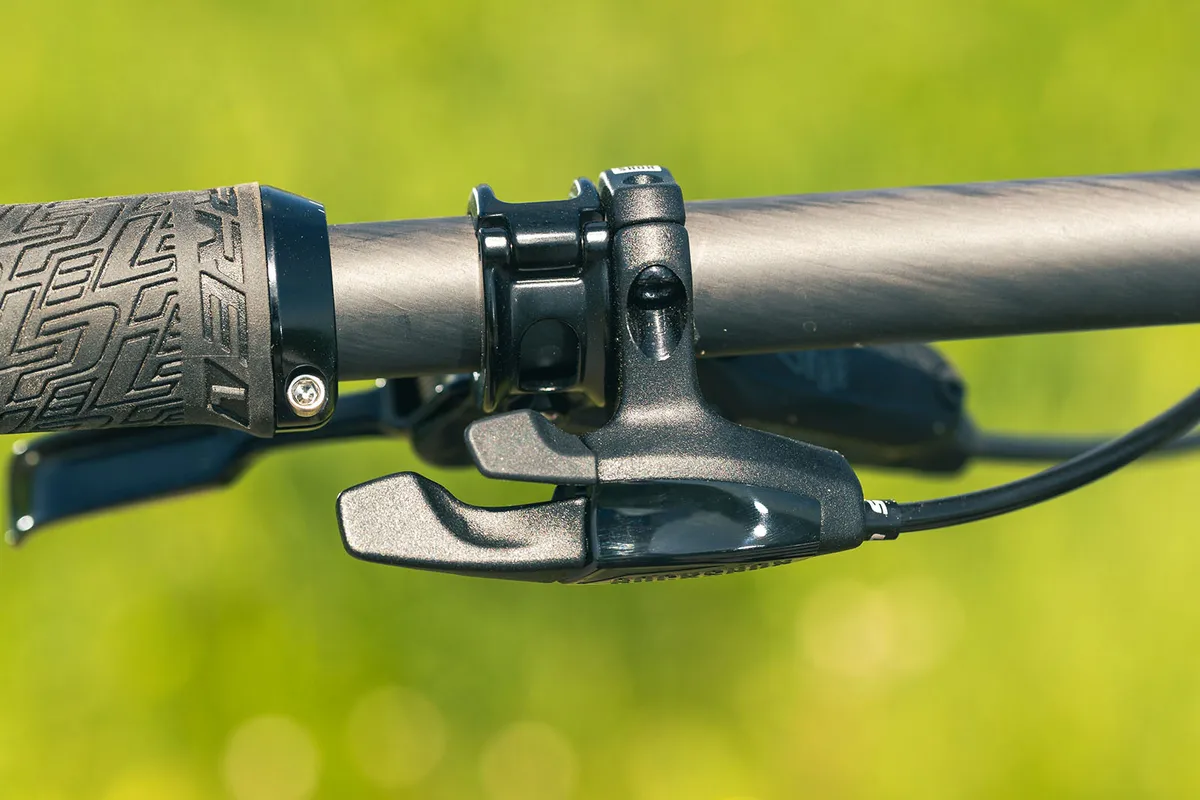
The SID SL fork tracks the ground well, though feels a little hyperactive at times. It doesn’t quite have the self-assured calmness of the Fox 32SC, though it’s supportive enough not to drop you into the depths of its travel frequently, and certainly smooths your path.
The SL chassis uses 32mm stanchions. With 100mm travel, the structure feels stiff enough for XC application, though harder or heavier riders might prefer the heavier, standard SID with its 35mm uppers.
The Lapierre's handling is good. It’s not the slackest bike out there, nor the longest, and so high-speed confidence is really helped by the fork and tyres’ performance, rather than geometry.
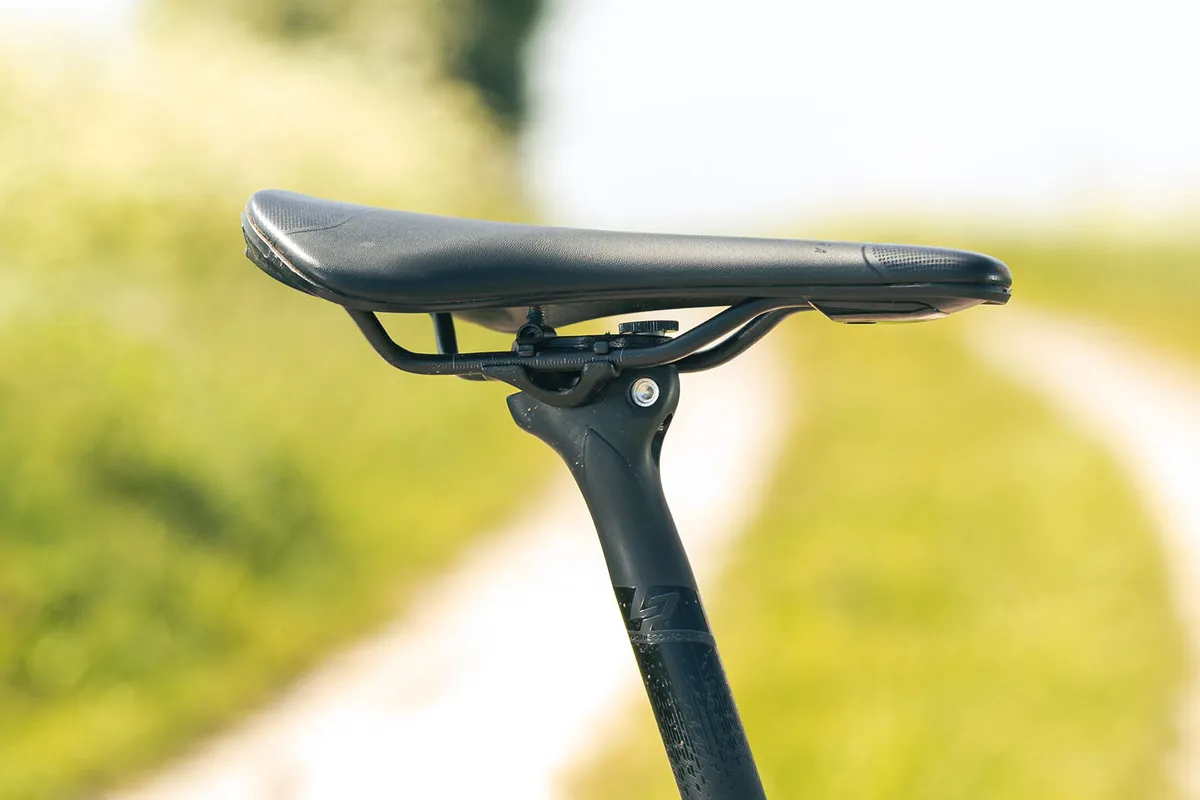
However, the BB sits low, so this helps the bike carve corners with your weight not teetering over the bike. The short chainstays encourage you to lift the front end, hopping over trail obstacles in your way.
That little bit of frame flex that gives some torsional twist when you’re hammering the pedals helps the bike hold a line well on off-camber sections of trail, or when rattling over matted roots.
SRAM’s Level TLM stoppers do a decent job, especially because Lapierre gives you a 180mm front rotor to help scrub some speed. Their feel is less punchy than Shimano’s offerings – brake feel is a personal preference, but I like the initial bite offered by Shimano.
How does the Lapierre Prorace CF 9.9 compare to the Pivot LES?
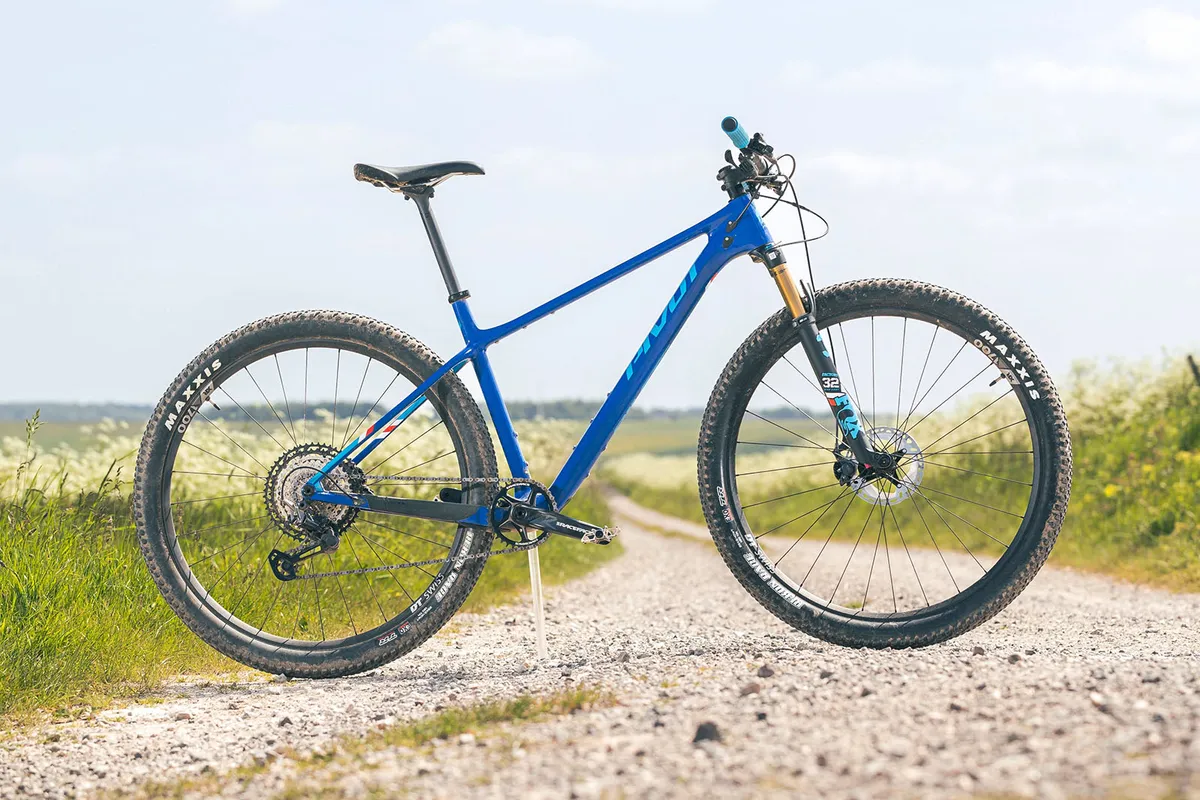
Both bikes share a relatively similar geometry, and so handling characteristics are closely matched.
The Lapierre’s frame has a touch more compliance than the Pivot’s, which helps it surf over rocky chatter that little bit better.
In terms of sat-down comfort, though, the Pivot’s seatpost really helps pull things back – I couldn’t pick between the two in this case.
On the race course, while Shimano’s XT and XTR drivetrain on the Pivot work well, the ease of shifting afforded by the Lapierre’s AXS setup is hard to ignore. And, when it comes to it, the Lapierre wins in the value stakes, too.
Lapierre Prorace CF 9.9 bottom line
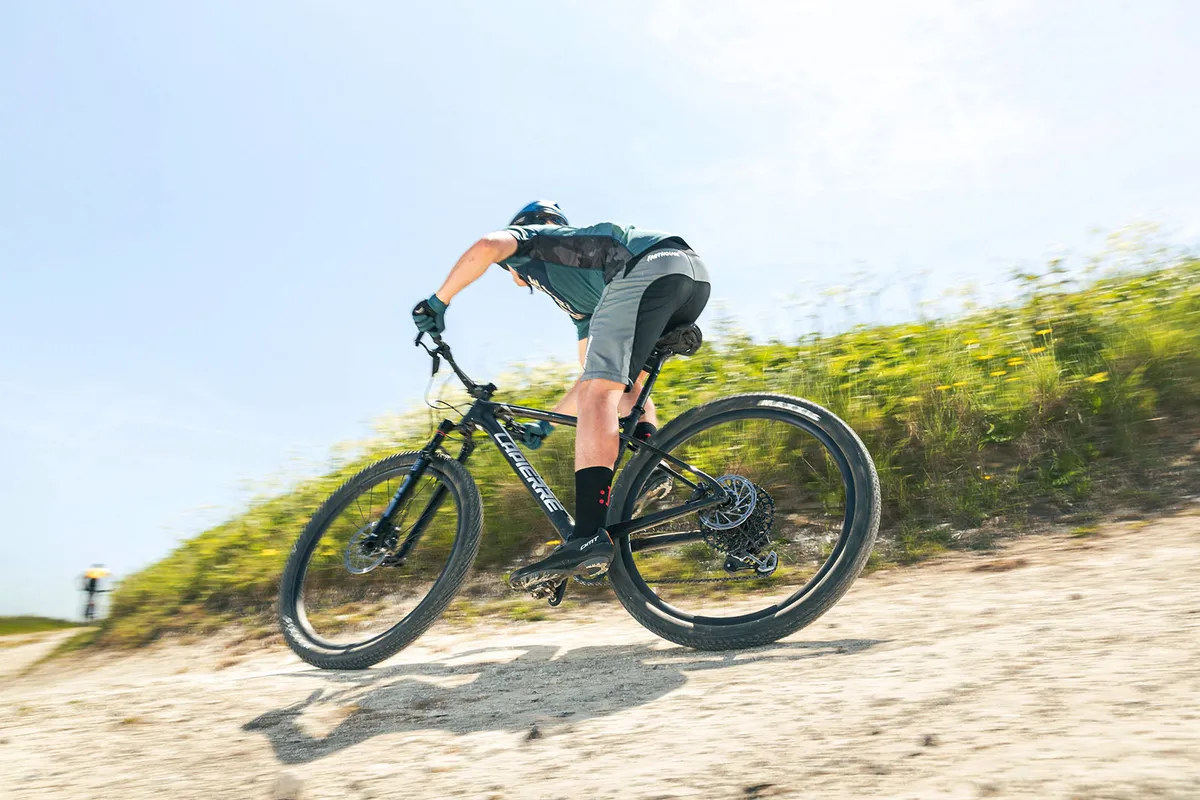
The Lapierre Prorace CF 9.9 is a great XC hardtail. The geometry gives it a fun and engaging ride, twisting and turning between the trees, and lifting easily over the worst of the rocks and roots.
Add in a comfortable frame, decent fork and great tyres, and it’s a confident place to be when faced with a flat-out fast rock garden.
Value is decent, too, making this a stand-out choice.
Product
| Brand | Lapierre |
| Price | €6799.00, £5999.00 |
| Weight | 9.80kg |
Features
| Fork | RockShox SID SL Ultimate, 100mm travel |
| Stem | Lapierrre 7050 alloy, 70mm |
| Chain | SRAM X01 |
| Frame | Carbon fibre |
| Tyres | Lapierre XC SL carbon |
| Brakes | SRAM Level TLM, 180/160mm rotors |
| Cranks | SRAM X1 Carbon, 34t |
| Saddle | Fizik Taiga |
| Wheels | Maxxis Rekon Race EXO TR 29x2.35in f, Maxxis Rekon Race EXO TR 29x2.35in r |
| Headset | FSA Orbit |
| Shifter | SRAM GX AXS |
| Cassette | SRAM XG-1295 |
| Seatpost | Lapierre |
| Grips/tape | Lapierre Foam |
| Handlebar | FSA SLK Carbon, 740mm |
| Bottom bracket | SRAM DUB |
| Available sizes | S, M, L, XL |
| Rear derailleur | SRAM X01 AXS |
